International Space Station
The International Space Station is an important and special place that is built on international cooperation and partnership. The station is a convergence of science, technology, and human innovation that benefits and advances our global community here on Earth. While the space station is an important aspect of our low-Earth orbit exploration, it is also the key to our next giant leap to deep space and our Journey to Mars. For example, the 2015 VEGGIE experiment aboard the space station is a critical aspect of long-duration exploration missions farther into the solar system. Food grown in space will be a resource for crew members that can provide them will essential vitamins and nutrients that will help enable deep space pioneering.
The space station is the second brightest object in the sky (after the moon), and you don’t even need a telescope to see it! We can even tell you exactly when and where to look up to Spot the Station in your area.
Humans have been living in space aboard the International Space Station 24-7-365 since Nov. 2, 2000.
In November 2000, many of us stuck on Earth wished we could join (at least temporarily) the Expedition 1 crew aboard the International Space Station. Floating effortlessly from module to module, looking down on Earth from a breathtaking height of 350 kilometers. It’s a dream come true for innumerable space lovers.
But be careful what you wish for! Living on the Space Station also means hard work, cramped quarters, and what’s that smell? Probably more outgassing from a scientific experiment or, worse yet, a crewmate. To get a feel of how long ago that was, this is what the world looked like then vs. now:
2000: Cell phones were entering the mainstream and now Astronauts can video chat with their friends and family from space
2000: Scott Kelly had just returned from his first spaceflight on Space Shuttle Discovery to service the Hubble Telescope and now Scott Kelly makes a year aboard the International Space Station for the longest mission ever embarked upon by a U.S. astronaut in 2015.
2000: You were instant messaging your friends from your desktop and now Astronauts have access to Twitter, Facebook, Vine, Instagram, and Pinterest from space.
2000: The International Space Station was under construction and now It is approximately the size of an American football field and weighs nearly 1 million pounds
2000: Inflatable furniture was a thing and now now An inflatable space module is a thing
How do astronauts spend normal life in International Space Station?
Floating around in zero gravity may sound like a blast, but it can actually present a lot of challenges to things we do every day here on Earth with little to no thought. Here are a few ways that astronauts on the International Space Station complete normal tasks in orbit:
Washing Hair: You can’t just have a shower on the space station because the water would come out of the faucet and float all over the place. In this video, NASA Astronaut Karen Nyberg demonstrates how she uses a bag of water, no-rinse shampoo, a towel, and her comb to wash her hair.
Drinking Coffee: There are special cups used on the space station to drink coffee from the new ISSpresso machine. Earlier, astronauts drank coffee from plastic bags, but let’s face it, that sounds pretty unenjoyable. Now, there are zero Gravity coffee cups, and an Italian espresso machine aboard the International Space Station. These cups were created with the help of capillary flow experiments conducted in space.
Sleeping: There’s nothing like going into bed for sleep after tired, but astronauts can’t exactly do that while they are in microgravity. Instead of beds, crew members use sleeping bags attached to the walls of their small crew cabins. They can zipper themselves in so that they don’t float around while they’re asleep. This may sound uncomfortable, but some astronauts, like Scott Kelly, say that they sleep better in space than they do on Earth.
Exercising: Exercising, in general, is an important part of a daily routine. In space, it even helps prevent the effects of bone and muscle loss associated with microgravity. Typically, astronauts exercise two hours per day, but the equipment they use is different than here on Earth. For example, if an astronaut wants to run on the treadmill, they have to wear a harness and bungee cords so that they don’t float away.
What are the benefits to humanity from space research or How does research in space help life on Earth??
A laboratory orbiting about 200 miles over us can have benefits on science on the ground. Here are a few ways that research aboard the International Space Station benefits humanity:
Improve Human Health: The space station has supported research that supports areas such as aging, trauma, disease, and the environment. Advances in human health have been gained from the unique microgravity environment. For example, the crew aboard the station experience issues such as bone loss while in space. Learning about the causes and understanding the treatments can help the elderly or people prone to Osteoporosis here on Earth.
Are you Asthmatic? The crew aboard the space station use a tool that could be used for Asthma patients. The lightweight, easy-to-use device is used to monitor levels of asthma control and the efficiency of medication. This leads to more accurate dosing, reduced attacks, and improved quality of life.
Drinkable water on the space station isn’t something just sitting in water bottles waiting to be consumed. Since storage and weight are limited in transporting things to space, crew members must recycle old, dirty water and reuse it day after day. The technology they use for this on the space station can also be used in at-risk areas on Earth that don’t have access to clean water.
Earth Observations: The International Space Station has a unique vantage point for observing Earth’s ecosystems. A wide variety of payloads can be attached to the station’s exterior to collect data on things like global climate, environmental change, and natural hazards.
Farming from Space: Farmers can leverage images from the International Space Station to grow crops. The camera captures frequent images of Earth in visible and infrared light, which helps farmers monitor crop growth for disease or fertility differences.
Some of the research on the space station has even provided benefits to the wine industry on Earth. Solutions for growing crops in space translate really well to solutions for mold prevention in wine cellars and other confined spaces on Earth.
Ten ways the Space Station is helping get us to Mars
The International Space Station is paving our way to Mars. Being the only microgravity laboratory in which long-duration investigations can take place, it provides a deeper understanding of how the human body reacts to long-term spaceflight. Here are the top ways the space station is helping us on our journey to Mars:
Communication Delays: Have you ever sent a text and got frustrated when it took longer than 3 seconds to send? Imaging communicating from Mars where round-trip delays could take up to 31 minutes! Our Comm Delay Assessment studies the effects of delayed communications for interplanetary crews that have to handle medical and other emergencies in deep space.
Astronaut Functional Performance: After a long night's sleep, do you ever feel a bit clumsy when you first get out of bed? Imagine how crew members might feel after spending six months to a year in microgravity! NASA Field Test investigation is working to understand the extent of physical changes in astronauts who live in space for long periods of time, with an aim toward improving recovery time and developing injury prevention methods for future missions.
Psychological Impacts of Isolation and Confinement: To study the behavioral issues associated with isolation and confinement, researchers evaluate the personal journals of space station crew members. These study results provide information to help prepare us for longer-duration spaceflight.
Impacts on Vision: Did you know that long-duration spaceflight can often cause changes to crew members' vision? It can, and our Ocular Health study monitors microgravity-induced visual impairment, as well as changes believed to arise from elevated intracranial pressure. All of this work hopes to characterize how living in microgravity can affect the visual, vascular, and central nervous systems.
Immune Responses: An important aspect of our journey to Mars is understanding how long-duration spaceflight affects the way crew members’ bodies defend against pathogens. Our Integrated Immune investigation collects and analyzes blood, urine, and saliva samples from crew members before, during, and after spaceflight to monitor changes in the immune system.
Food for Long-Duration Crews: Just like a hiker preparing for a long trek, packing the foods that will give you the most energy for the longest amount of time is key to your success. This is also true for astronauts on long-duration missions. Our Energy investigation measures a crew members’ energy requirements, which is a crucial factor needed for sending the correct amount of the right types of food to space.
Exercise for Long-Term Missions: Rigorous exercise is already a regular part of astronauts’ routines, and continuing that focus will be critical to keeping crew members’ bodies strong and ready for a mission to Mars and a healthy return to Earth. Our Sprint investigation is studying the best combination of intensity and duration for exercise in space.
Determine Best Habitat/Environment for Crews: Have you ever complained about your room is too small? Imagine living in cramped quarters with an entire crew for months on a Mars mission! NASA Habitability investigation collects observations that will help spacecraft designers understand how much habitable volume is required, and whether a mission’s duration impacts how much space crew members need.
Growing Food in Space: There’s nothing like fresh food. Not only does it provide valuable nutrition for astronauts, but can also offer psychological benefits from tending and harvesting the crops. Our Veggie investigation studies how to best utilize a facility aboard the space station for growing fresh produce in microgravity.
Manufacturing Items in Space: When crews head to Mars, there may be items that are unanticipated or that break during the mission. NASA 3-D Printing in Zero-G Technology Demonstration would give crews the ability to manufacture new objects on demand while in space.
Things you Like to Know About Spacewalks
What’s the Point of a Spacewalk?
Spacewalks are important events where crew members repair, maintain and upgrade parts of the International Space Station. Spacewalks can also be referred to as an EVA – Extravehicular Activity.
What Do They Wear?
The Extravehicular Mobility Unit (EMU) spacewalking suit weighs around 350 pounds. It’s weightless in space, but the mass is still very real. The EMU provides crewmembers with life support and an enclosure that enables them to work outside the space station. The suit provides atmospheric containment, thermal insulation, cooling, solar radiation protection, and micrometeoroid/orbital debris protection.
How Long Are Spacewalks?
Spacewalks typically last around 6 ½ hours but can be extended to 7 or 8 hours, if necessary. The timeline is designed to accommodate as many tasks as possible, as spacewalks require an enormous amount of work to prepare.
What About Eating and Drinking?
Before a spacewalk astronauts eat light, usually something like a protein bar. The spacesuits also have a drink bag inside, and there is a bite valve that allows ready access to water.
What About Communication?
Spacewalkers wear a ‘comm’ cap that allows them to constantly communicate with astronauts inside the space station that are helping with the walk, and with mission control. Astronauts also wear a checklist on their left wrist called a “cuff checklist”. This list contains emergency procedures.
What About Light?
Most people don’t realize about spacewalks are that the crew will experience a sunrise/sunset every 45 minutes. Luckily, their spacesuits are equipped with lights that allow them to see in times of darkness.
How Do They Stay Safe?
When on a spacewalk, astronauts use safety tethers to stay close to their spacecraft. One end of the tether is hooked to the spacewalker, while the other end is connected to the vehicle. Another way astronauts stay safe is by wearing a SAFER, which is a Simplified Aid for EVA Rescue. This device is worn like a backpack and uses small jet thrusters to let an astronaut move around in space.
Fun Things To Do Without Gravity
Astronauts onboard the International Space station are typically active for at least 9 ½ hours per day doing science, exercising, and maintaining systems. Excluding scheduled time for sleep and lunch, astronauts have only 4 hours of free time during the workweek, and that includes time for meals and general hygiene.
Even with a loaded calendar, the few who have such an opportunity to live in the microgravity environment find ways to make the most of this experience. Here are just a few of their favorite things about living in space:
Flying: One of the most self-explanatory (and most fun!) aspects of living in space for the astronauts is “flying”. In space, there is no up or down, so there is no floor or ceiling. There are rails throughout the space station that astronauts use to push themselves among the modules.
Eating: Astronauts actually describe the food on the space station as quite tasty! In part, that’s because they have a large role in choosing their own meals. Over time though, many astronauts experience desensitized taste buds from the shifting fluid to their head. Toward the end of their expedition, spicy foods tend to be their favorites because of this phenomenon.
Drinking: Liquid behaves very differently in space than it does on Earth. Astronauts cannot simply pour a cup of coffee into a mug. Without gravity, it would stick to the walls of the cup and would be very difficult to sip. Most of the time, astronauts fill a bag with liquid and use a special straw with a clamp to keep the contents from flying out.
Playing Games: The space station crew occasionally gets downtime which they can spend however they please. Sometimes they watch a movie, read a book, or take photos of Earth from the Cupola windows. Other times they invent games to play with each other, and each crew tends to come up with new games. Sometimes it can be hitting a target, flying from one end of the station to the other fastest, or playing zero-gravity sports.
Going Out For A Walk: Preparing and executing a spacewalk can take around 8 to 12 hours, and can be a jam-packed schedule. Spacewalkers have to be focused on the task at hand and sticking to the timeline. That said, they can still catch a spare moment to see the Earth 250 miles below. Many astronauts describe that view from a spacewalk as one of the most beautiful sights in their lives.
Space Food
Food is needed for everyone to survive and in space, there’s no exception. Let’s take a closer look at what astronauts eat while in space. Since the start of human spaceflight, NASA has worked to improve the taste, texture, and shelf life of food for our crews. NASA food scientists are challenged with developing healthy menus that can meet all of the unique requirements for living and working in the extreme environment of space.
Food scientists must develop foods that will be easier to handle and consume in a microgravity environment. These food products require no refrigeration and provide the nutrition humans need to remain healthy during spaceflight. Freeze drying food allows food to remain stable at ambient temperatures, while also significantly reducing the weight.
Fun Facts About Space Food
Astronauts use tortillas in many of their meals. Tortillas provide an edible wrapper to keep food from floating away.
Why tortillas and not bread?
Tortillas make far fewer crumbs and can be stored easier. Bread crumbs could potentially float around and get stuck in filters or equipment.
The first food is eaten by an American astronaut in space: Applesauce
The first American astronaut to eat in space dined on applesauce squeezed from a no-frills, aluminum toothpaste-like tube. Since then, food technology has cooked up better ways to prepare, package, and preserve space fare in a tastier, more appetizing fashion.
All food that is sent to the space station is precooked.
Sending precooked food means that it requires no refrigeration and is either ready to eat or can be prepared simply by adding water or by heating. The only exceptions are the fruit and vegetables stowed in the fresh food locker.
Salt and pepper are used in liquid form on the International Space Station
Seasonings like salt and pepper have to be used in liquid form and dispensed through a bottle on the space station. If they were granulated, the particles would float away before they even reached the food.
Food can taste bland in space
Some people who live in space have said that food is not the same while in microgravity. Some say that it tastes bland, some do not like their favorite foods, and some love to eat foods they would never eat on Earth. We believe this phenomenon is caused by something called a stuffy head. This happens when crew member’s heads get stopped up because blood collects in the upper part of the body. For this reason, hot sauce is used A LOT on the space station to make up for the bland flavor.
Astronaut ice cream is not actually eaten on the space station
Even though astronaut ice cream is sold in many science centers and enjoyed by many people on Earth, it’s not actually sent to the space station. Whenever there is space in a freezer heading to orbit, the astronauts can get real ice cream onboard.
Instead of bowls, there are bags and cans
Most American food is stored in sealed bags, while most Russian food is kept in cans.
What’s a Space Headache?
Headaches can be a common complaint during spaceflight. The Space Headaches experiment improves our understanding of such conditions, which helps in the development of methods to alleviate associated symptoms and improve the well-being and performance of crew members in orbit. This can also improve our knowledge of similar conditions on Earth.
How the International Space Station is Benefiting Earth?
With astronauts living and working aboard the International Space Station, we’re learning a great deal about creating and testing critical systems, maintaining efficient communications, and protecting the human body during a deep space mission. While these are critical to our journey to Mars, it is important to also note all the ways in which research conducted and technology tested aboard the orbiting laboratory help us here on Earth. Here are the ways how the space station is benefiting life on Earth.
Commercializing Low-Earth Orbit: An exciting new commercial pathway is revolutionizing and opening access to space, fostering America’s new space economy in low-Earth orbit. For the first time, the market is expressing what research can and should be done aboard the microgravity laboratory without direct government funding. Our move to purchase commercial cargo resupply and crew transportation to the space station enables U.S. businesses to develop a competitive capability they also can sell as a service to others while freeing our resources for deep space exploration. Private sector participation provides a new model for moving forward in partnership with the government.
Supporting Water Purification Efforts Worldwide: Whether in the confines of the International Space Station or a tiny hut village in sub-Saharan Africa, drinkable water is vital for human survival. Unfortunately, many people around the world lack access to clean water. Using technology developed for the space station, at-risk areas can gain access to advanced water filtration and purification systems, making a life-saving difference in these communities. The Water Security Corporation, in collaboration with other organizations, has deployed systems using NASA water-processing technology around the world.
Growing High-Quality Protein Crystals: There are more than 100,000 proteins in the human body and as many as 10 billion in nature. Every structure is different, and each protein holds important information related to our health and to the global environment. The perfect environment in which to study these structures in space. Microgravity allows for optimal growth of the unique and complicated crystal structures of proteins leading to the development of medical treatments. An example of a protein that was successfully crystallized in space is hematopoietic prostaglandin D synthase (H-PGDS), which may hold the key to developing useful drugs for treating muscular dystrophy. This particular experiment is an example of how understanding a protein’s structure can lead to better drug designs. Further research is ongoing.
Bringing Space Station Ultrasound to the Ends of the Earth: Fast, efficient, and readily available medical attention is key to survival in a health emergency. For those without medical facilities within easy reach, it can mean the difference between life and death. For astronauts in orbit about 250 miles above Earth aboard the International Space Station, that problem was addressed through the Advanced Diagnostic Ultrasound in Microgravity (ADUM) investigation. Medical care has become more accessible in remote regions by the use of small ultrasound units, telemedicine, and remote guidance techniques, just like those used for people living aboard the space station.
Improving Eye Surgery with Space Hardware: Laser surgery to correct eyesight is a common practice, and technology developed for use in space is now commonly used on Earth to track a patient’s eye and precisely direct the laser scalpel. The Eye Tracking Device experiment gave researchers insight into how humans’ frames of reference, balance, and overall control of eye movement are affected by weightlessness. In parallel with its use on the space station, the engineers realized the device had the potential for applications on Earth. Tracking the eye’s position without interfering with the surgeon’s work is essential in laser surgery. The space technology proved ideal, and the Eye Tracking Device equipment is now being used in a large proportion of corrective laser surgeries throughout the world.
Making Inoperable Tumors Operable with a Robotic Arm: The delicate touch that successfully removed an egg-shaped tumor from Paige Nickason’s brain got a helping hand from a world-renowned arm, a robotic arm, that is. The technology that went into developing neuroArm, the world’s first robot capable of performing surgery inside magnetic resonance machines, was born of the Canadarm (developed in collaboration with engineers at MacDonald, Dettwiler, and Associates, Ltd. [MDA] for the U.S. Space Shuttle Program) as well as Canadarm2 and Dextre, the Canadian Space Agency’s family of space robots performing the heavy lifting and maintenance aboard the International Space Station. Since Nickason’s surgery in 2008, neuroArm has been used in initial clinical experience with 35 patients who were otherwise inoperable.
Preventing Bone Loss Through Diet and Exercise: In the early days of the space station, astronauts were losing about one-and-a-half percent of their total bone mass density per month. Researchers discovered an opportunity to identify the mechanisms that control bones at a cellular level. These scientists discovered that high-intensity resistive exercise, dietary supplementation for vitamin D, and specific caloric intake can remedy the loss of bone mass in space. The research also is applicable to vulnerable populations on Earth, like older adults, and is important for continuous crew member residency aboard the space station and for deep space exploration to an asteroid placed in lunar orbit and on the journey to Mars.
Understanding the Mechanisms of Osteoporosis: While most people will never experience life in space, the benefits of studying bone and muscle loss aboard the station has the potential to touch lives here on the ground. Model organisms are non-human species with characteristics that allow them easily to be reproduced and studied in a laboratory. Scientists conducted a study of mice in orbit to understand the mechanisms of osteoporosis. This research led to the availability of a pharmaceutical on Earth called Prolia® to treat people with osteoporosis, a direct benefit of pharmaceutical companies using the spaceflight opportunity available via the national lab to improve health on Earth.
Developing Improved Vaccines: Ground research indicated that certain bacteria, in particular Salmonella, might become more pathogenic (more able to cause disease) during spaceflight. Salmonella infections result in thousands of hospitalizations and hundreds of deaths annually in the United States. While studying them in space, scientists found a pathway for bacterial pathogens to become virulent. Researchers identified the genetic pathway activating in Salmonella bacteria, allowing the increased likelihood to spread in microgravity. This research on the space station led to new studies of microbial vaccine development.
Providing Students Opportunities to Conduct Their Own Science in Space: From the YouTube Space Lab competition, the Student Spaceflight Experiments Program, and SPHERES Zero Robotics, space station educational activities inspire more than 43 million students across the globe. This tyFrom the YouTube Space Lab competition, the Student Spaceflight Experiments Program, and SPHERES Zero Robotics, space station educational activities inspire more than 43 million students across the globe. These types of inquiry-based projects allow students to be involved in human space exploration with the goal of stimulating their studies of science, technology, engineering, and mathematics. It is understood that when students test a hypothesis on their own or compare work in a lab to what’s going on aboard the space station, they are more motivated towards math and science.
Breast Cancer Detection and Treatment Technology: A surgical instrument inspired by the Canadian Space Agency’s heavy-lifting and maneuvering robotic arms on the space station is in clinical trials for use in patients with breast cancer. The Image-Guided Autonomous Robot (IGAR) works inside an MRI machine to help accurately identify the size and location of a tumor. Using IGAR, surgeons also will be able to perform highly dexterous, precise movements during biopsies.
Monitoring Water Quality from Space: Though it completed its mission in 2015, the Hyperspectral Imager for the Coastal Ocean (HICO) was an imaging sensor that helped detect water quality parameters such as water clarity, phytoplankton concentrations, light absorption, and the distribution of cyanobacteria. HICO was first designed and built by the U.S. Naval Research Laboratory for the Office of Naval Research to assess water quality in the coastal ocean. Researchers at the U.S. Environmental Protection Agency (EPA) took the data from HICO and developed a smartphone application to help determine hazardous concentrations of contaminants in water. With the space station’s regular addition of new instruments to provide a continuous platform for Earth observation, researchers will continue to build proactive environmental protection applications that benefit all life on Earth.
Monitoring Natural Disasters from Space: An imaging system aboard the station, ISS SERVIR Environmental Research and Visualization System (ISERV) captured photographs of Earth from space for use in developing countries affected by natural disasters. A broader joint endeavor by NASA and the U.S. Agency for International Development, known as SERVIR, works with developing nations around the world to use satellites for environmental decision-making. Images from orbit can help with rapid response efforts to floods, fires, volcanic eruptions, deforestation, harmful algal blooms, and other types of natural events. Since the station passes over more than 90 percent of the Earth’s populated areas every 24 hours, the ISERV system was available to provide imagery to developing nations quickly, collecting up to 1,000 images per day. Though ISERV successfully completed its mission, the space station continues to prove to be a valuable platform for Earth observation during times of disaster.
Describing the Behavior of Fluids to Improve Medical Devices: Capillary Flow Experiments (CFE) aboard the space station study the movement of a liquid along surfaces, similar to the way fluid wicks along with a paper towel. These investigations produce space-based models that describe fluid behavior in microgravity, which has led to a new medical testing device on Earth. This new device could improve the diagnosis of HIV/AIDS in remote areas, thanks in part to the knowledge gained from the experiments.
Improving Indoor Air Quality: Solutions for growing crops in space now translates to solutions for mold prevention in wine cellars, homes, and medical facilities, as well as other industries around the world. NASA is studying crop growth aboard the space station to develop the capability for astronauts to grow their own food as part of the agency’s journey to Mars. Scientists working on this investigation noticed that a buildup of a naturally occurring plant hormone called ethylene was destroying plants within the confined plant growth chambers. Researchers developed and successfully tested an ethylene removal system in space, called Advanced Astroculture (ADVASC). It helped to keep the plants alive by removing viruses, bacteria, and mold from the plant growth chamber. Scientists adapted the ADVASC system for use in air purification. Now, this technology is used to prolong the shelf-life of fruits and vegetables in the grocery store, and winemakers are using it in their storage cellars.
Things That Happen When You Go To Space
- Most expeditions to the space station last four to six months. By doubling the length of this mission, researchers hope to better understand how the human body reacts and adapts to long-duration spaceflight. Here are a few things that happen when astronauts go to the space station:
- Your personal hygiene takes on a different form like astronauts take sponge baths. And how do astronauts use showers in space? They use wet towels.
- Sleeping arrangements might take some getting used to. Astronauts have a sleeping bag and that has one strap on top and so astronauts' heads don't forward to hit the computer in the station. But is difficult to sleep in space because sleeping styles are entirely different.
- Internet services will remind you of the 90s like dial-up.
- Astronauts never do laundry and they throw their clothes away after use.
- All of your water is recycled including urine as freshwater.
Hubble Space Telescope
Since Hubble launched in April 1990, it has made more than 1.2 million observations, some to locations more than 13.4 billion light-years from Earth. Hubble can see astronomical objects with an angular size of 0.05 arc seconds, which is like seeing a pair of fireflies in Tokyo from your home in Maryland. This accuracy allows us to see images like this one of Little Gem Nebula, roughly 6,000 light-years away from us.
Images from Hubble are regularly released to the public and are some of the most breathtaking views in the Universe. Images like this one of the Lagoon Nebula, in the constellation of Sagittarius, not only make for amazing desktop screen-savers but provide us with valuable scientific information about distant stars and galaxies, as well as the planets in our solar system.

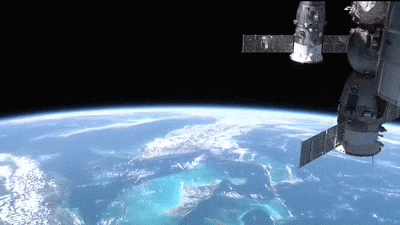
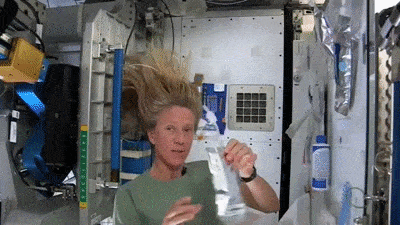
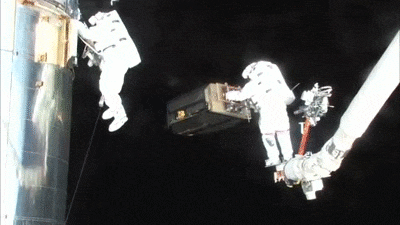

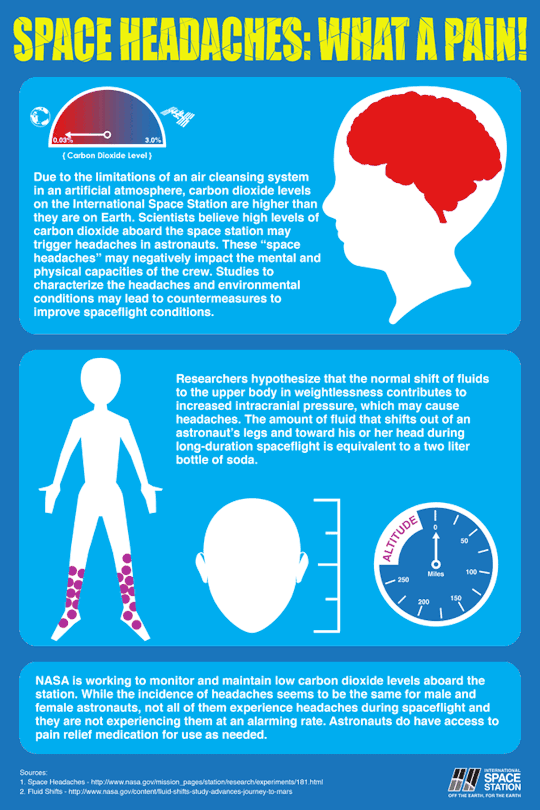

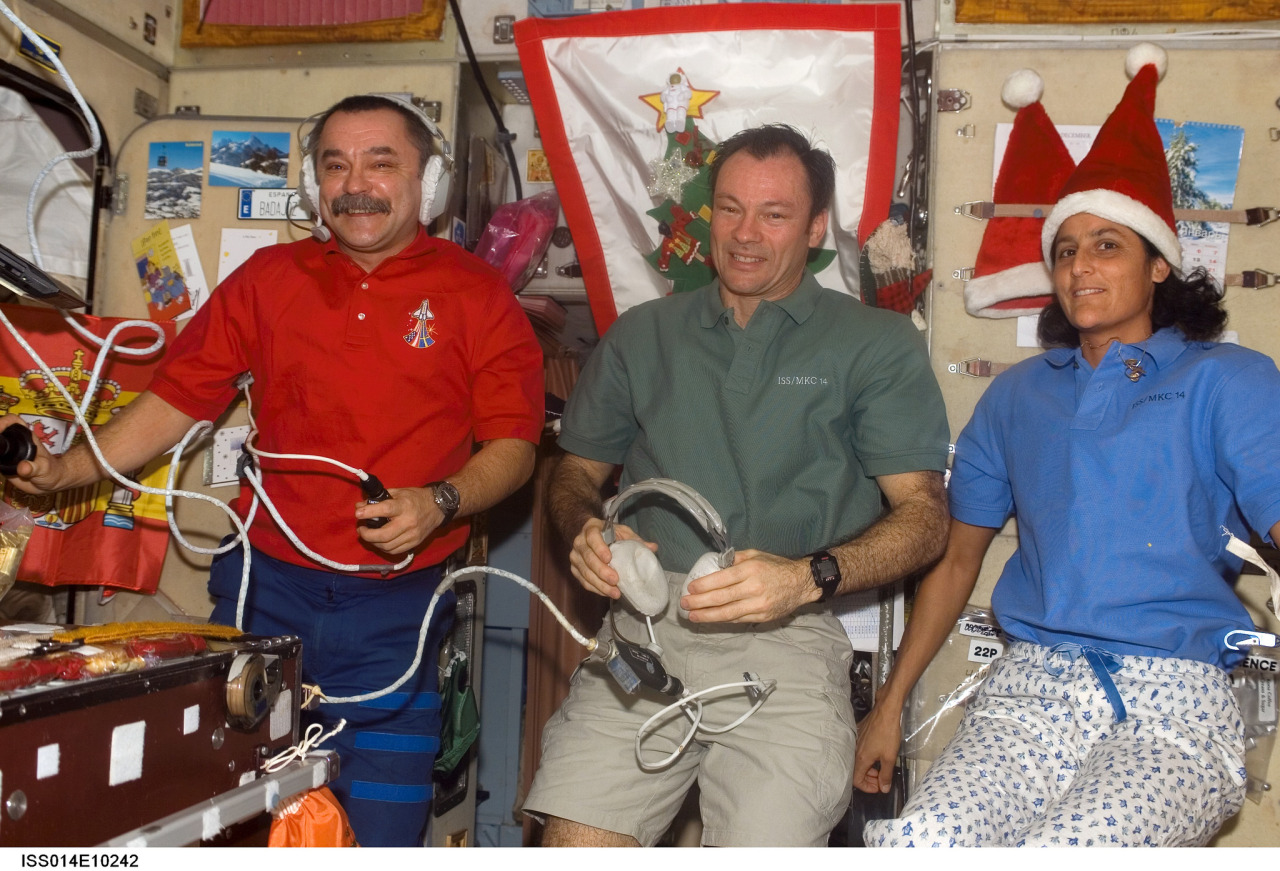
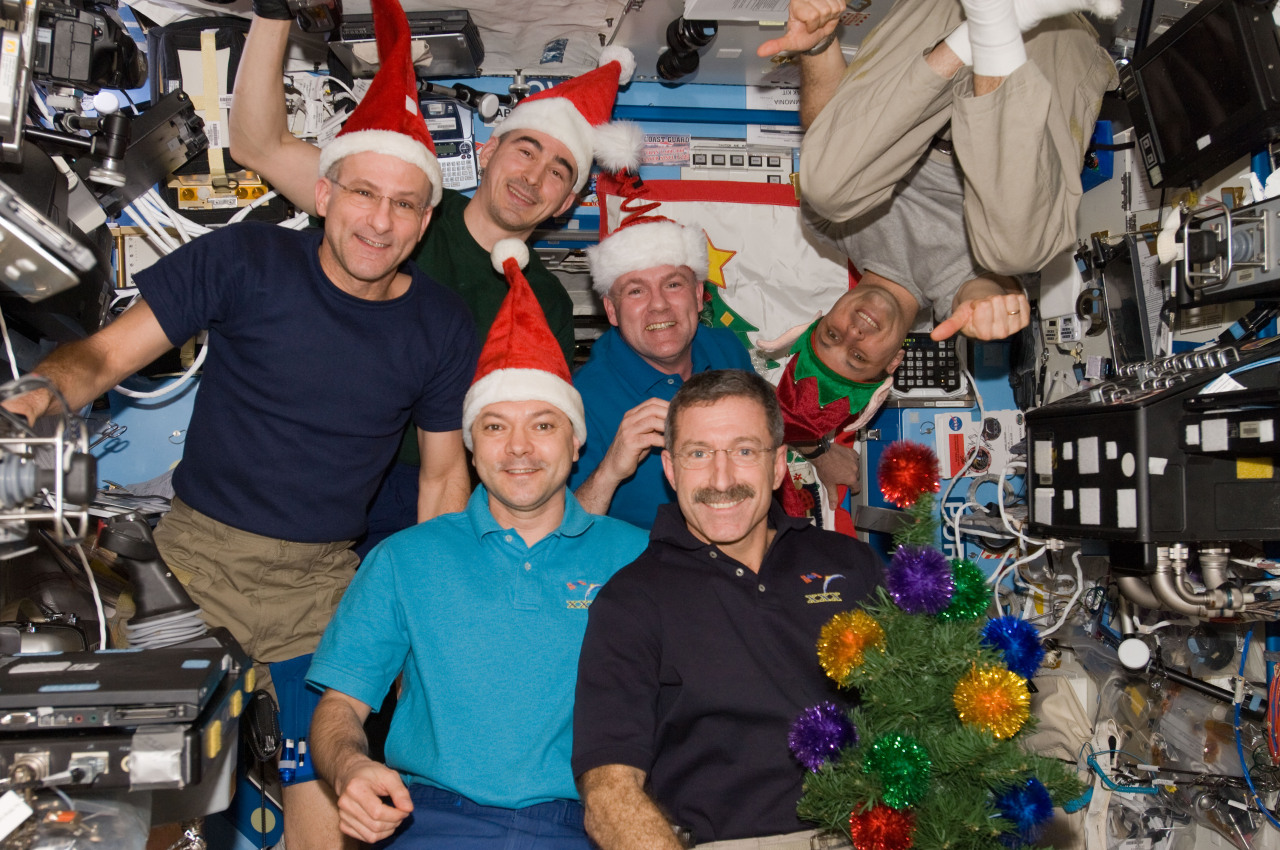
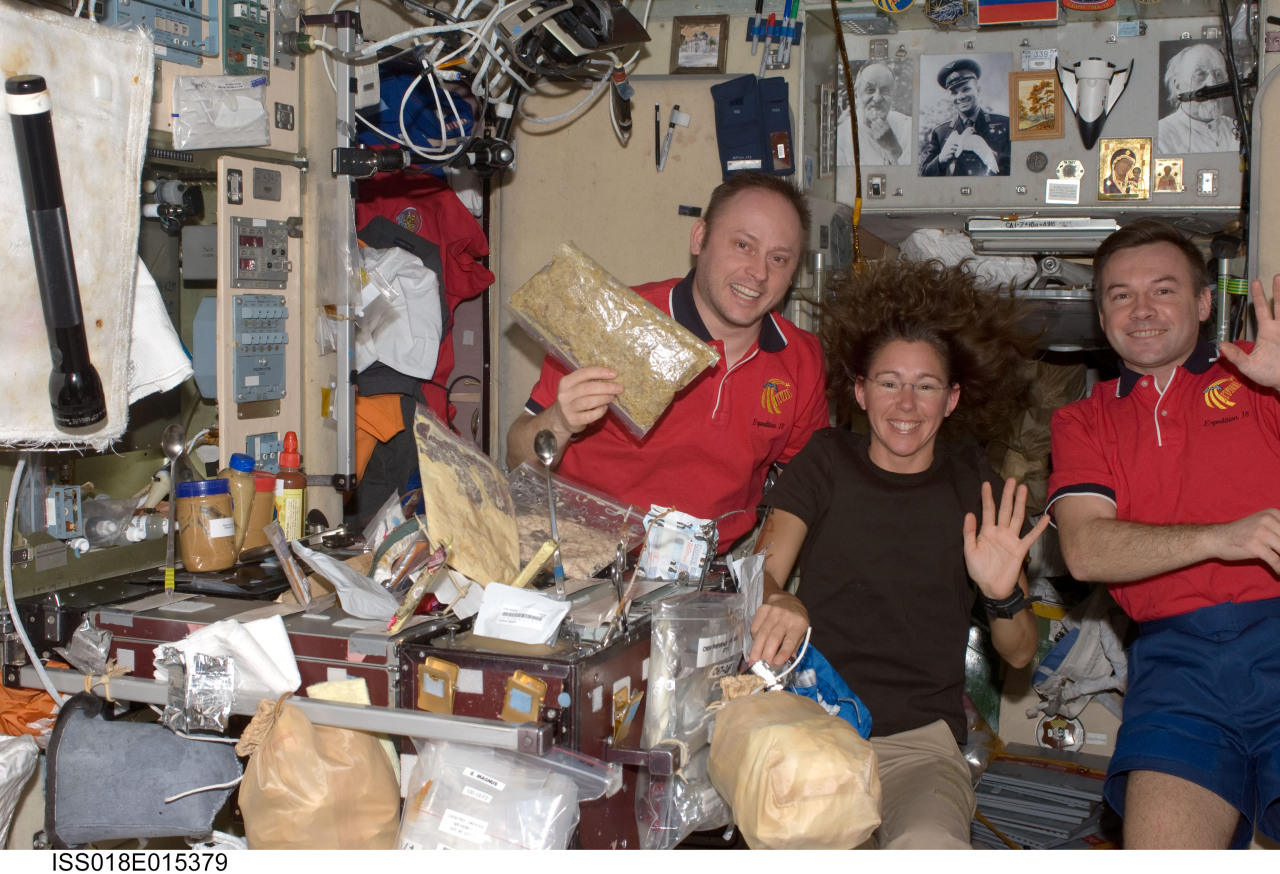



0 Comments